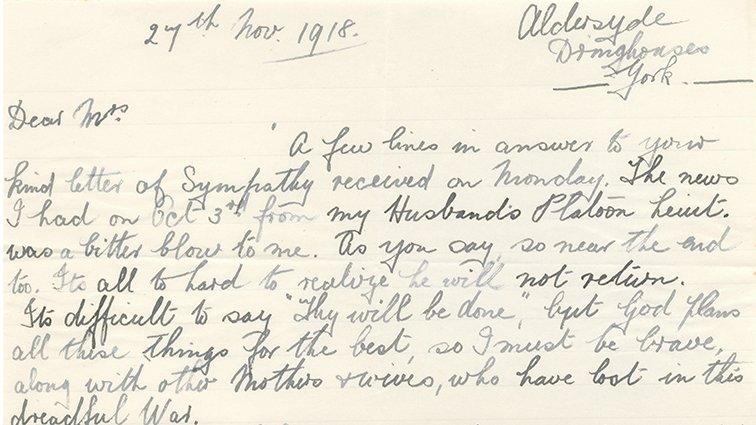What's the point of the Teesside Archives?
- Published
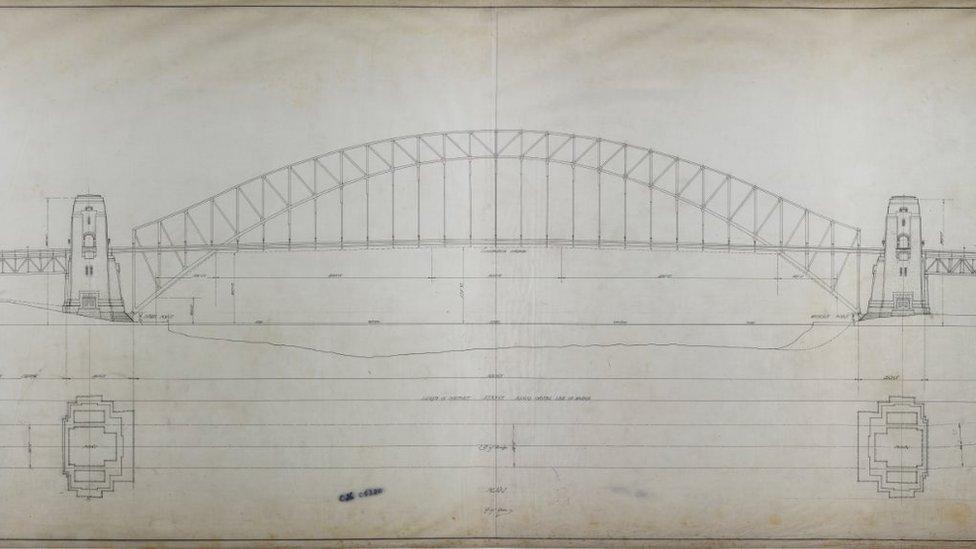
The archives have more than 700 plans for the Sydney Harbour Bridge
The Teesside Archives contain millions of documents from the area's councils and industrial past. With the archives set to move to a new home, what's the point of them and what secrets do they hold?
Sydney Harbour Bridge is a global landmark, an icon of Australia and a must-see for tourists since its construction in 1932.
But for those wanting a more detailed look at the bridge, the answer to their architectural prayers can be found 10,500 miles away in a crumbling former Post Office in Middlesbrough.
The Teesside Archives, which have been based in Exchange House since the 1980s, have more than 700 plans for the bridge as part of a collection of records from the area's industrial firms.
One of them - Dorman Long - built Sydney's famous postcard subject.
"Most people just want to see the drawing of the span of it," Ruth Hobbins, says with a laugh, "but if they want to go into minute detail we do have that here as well.
"There are some very technical drawings of details that would only really be of interest to engineers."

The plans for the Sydney Harbour Bridge can be found in the Teesside Archives
The bridge plans are among the millions of items held by the archives, of which Ruth has been the custodian for 11 years.
The archives were formed in 1974 when four councils - Middlesbrough, Stockton, Hartlepool and Redcar and Cleveland - merged their history records.
It costs £241,800 a year to operate, which is shared between the authorities.
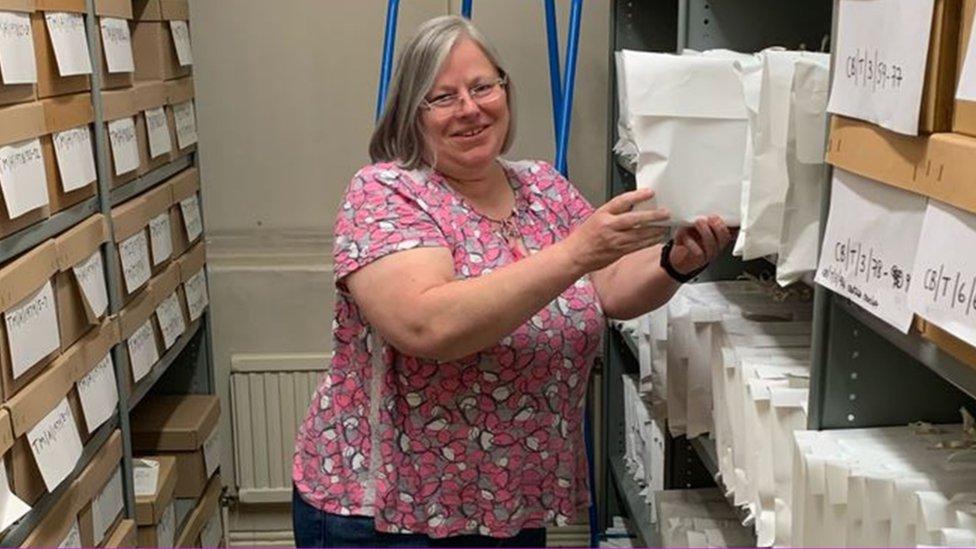
Ruth Hobbins has worked at the archives for 11 years
Every discussion and decision from the council chambers are stored here covering about 800 cubic metres which, as Ruth says, "is a lot of boxes".
Committee proceedings, school records, planning applications, all can be found in the filing cabinets and store rooms of Exchange House.
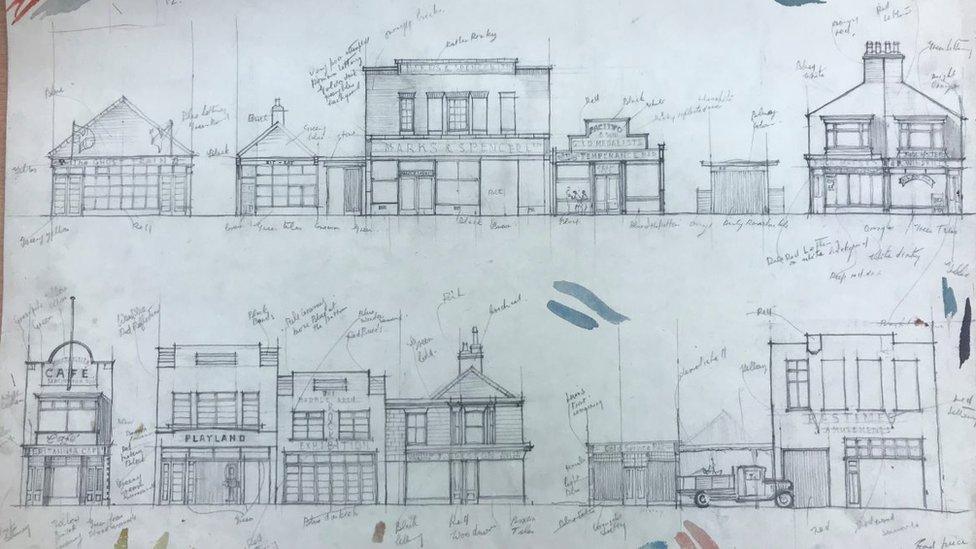
Ruth's favourite items include detailed drawings of shops in Redcar from the 1950s
"We are always going to need to keep records of things like council minutes because we need to know why decisions were made and when," Ruth says.
"You might not realise the importance of them or their legal evidential value for years to come.
"People do not create things with the intention of keeping them forever but a lot of them go on to have longer term significance and interest."
She cites Magna Carta as an example, a document drawn for a specific purpose at the time but which has gone to be "very special and precious".
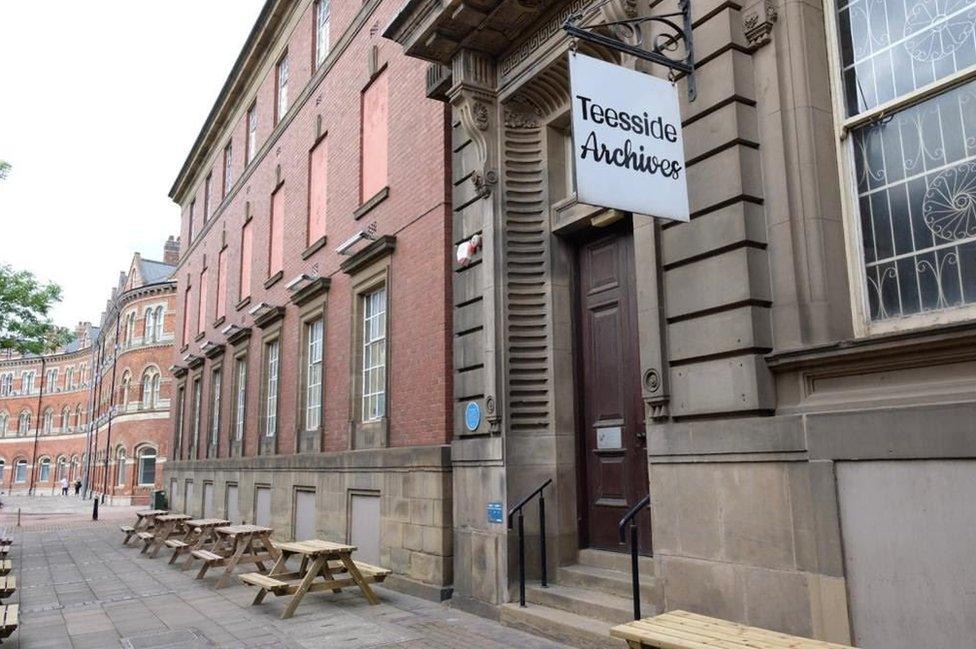
Exchange House needs £2m worth of work to bring it up to standards set by The National Archives
But, as evidenced by the Sydney bridge files, it's not just council papers here.
Coroner proceedings, adoption files, church and hospital records are in the archives as well as the private records of businesses and families that have been donated.
One of the archives' most popular vaults is the British Steel Collection, which catalogues the rise and fall of the nation's steel industry.
The archives of more than 30 iron and steel companies are held, including those of Cleveland Bridge and Dorman Long, firms responsible for bridges and engineering projects around the world.
The oldest document in the archive is a small parchment from 1270 detailing a dispute between people at Guisborough Priory.
"The older things tend to be land holdings and title deeds, although we do not have that much that is that old," Ruth says.
"Most of our archive starts in the industrial revolution era."
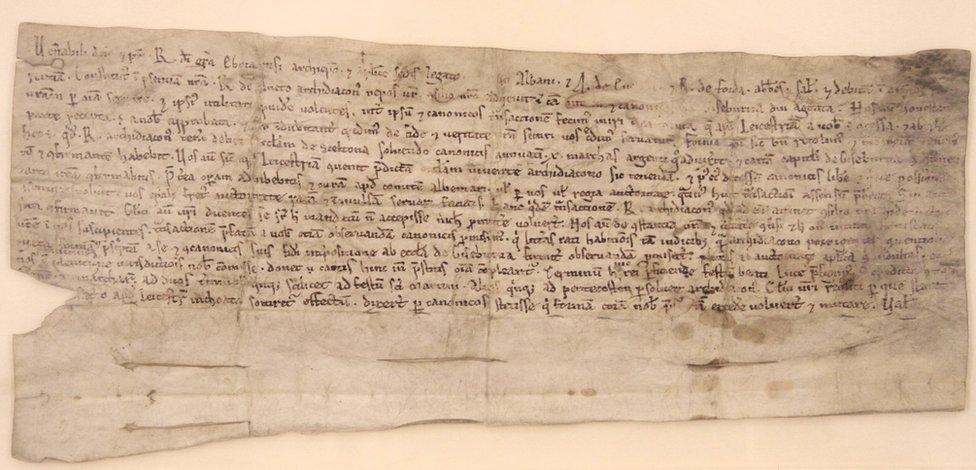
The archives' oldest document was about a dispute between people at Guisborough Priory from 1270
The archives are all available for public perusal, with about 3,000 people visiting each year.
"Most of the people who use our archives are students and historians, people who have got an active or working interest in the documents," Ruth said.
"We also get people coming who are doing work on their house and need the original planning application for it, people who only hear of us when they need us."
A lot more thought and care has to go into the looking after the documents than simply stuffing them in filing cabinets.

The archives' documents chart the development of Teesside through the growth of industry
Disaster plans are in place in case of fire, the archives being a priority response for the fire service.
"Fire is a big risk but in reality this building is pretty solid and the archives are split across several floors in many rooms," Ruth said, adding: "The chances of it all being lost are quite small.
"The bigger risk would be water damage. We get smaller things come in with bits of water damage. We have a very a good conservationist and most of the time we can fix it.
"There is no food or drink allowed in the vicinity of the archive, especially food as that could attract insects. A lot of our older documents are made from animal skins and the glues are from animal products which insects would love to feast on.
"An infestation would be a serious problem. Sometimes we get items come in that might have an insect on them, they have to be put in the freezer to kill them off."
The increase in digital documentation is also causing the archives to adapt to new issues.
"The digital age does present a new problem because I have to think about how I store all these documents electronically," Ruth said.
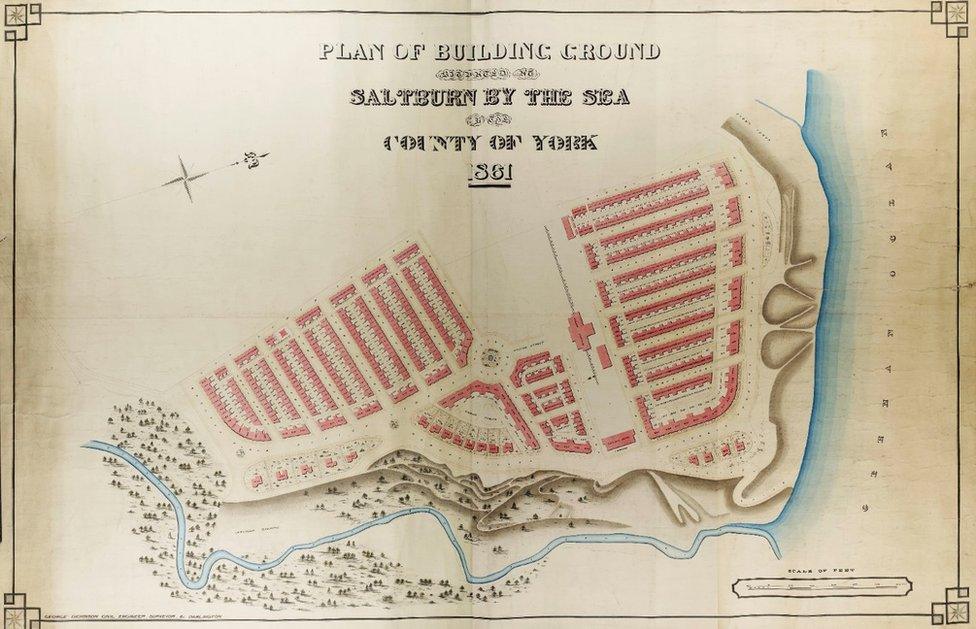
A layout of Saltburn from 1861 is one of the documents held by the archives
"Currently, many minutes and things are available online on council websites but will they still be there in 50 years? We will still need to have them then.
"We do use portable hard drives but they are vulnerable, if I dropped one it could lose a vast amount of data.
"We need to make sure the digitally stored material is secure so cannot be altered but is also accessible to people. These are some of the things we have to think about, in future we will get more digital documents than physical."
After nearly 40 years in Exchange House, the archives are set to move.
Middlesbrough Council says the current building "fundamentally" fails to meet national standards and needs work worth £2m to bring it up to scratch, according to the Local Democracy Reporting Service.
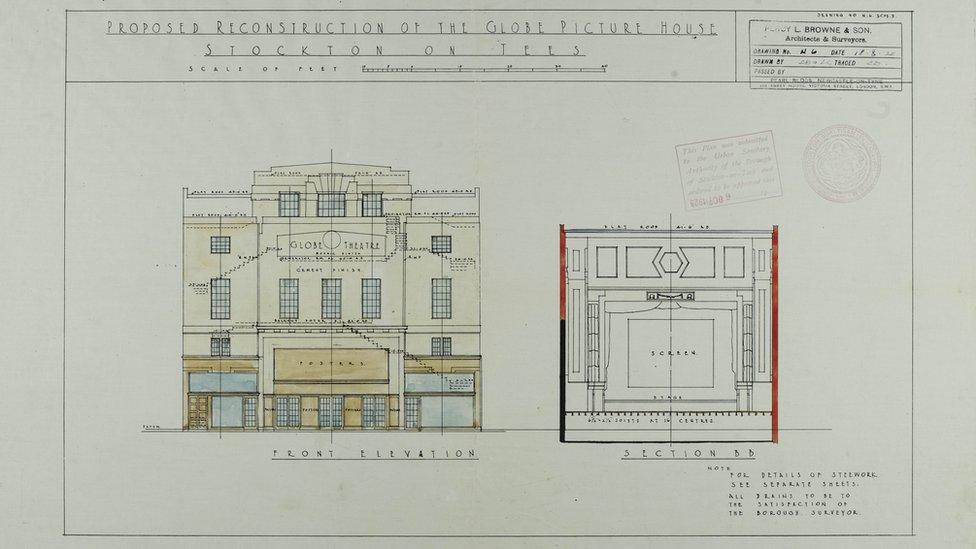
The archives also holds plans of iconic Teesside buildings such as Stockton's Globe Theatre
With Exchange House earmarked for sale, some of the archives collection, its 10 staff and conservation studio will be moved to the Dorman Museum in Linthorpe in early-2022 while the bulk of documents will be put into safe storage.
"The council are not pushing the archives away and wanting rid of them but it will be a bit more difficult for our customers," Ruth says.
"People will still be able to visit but they will just have to give us a bit more notice and tell us what they want to see so we can order it from storage.
"What makes our archive special, as well as the history it holds, is the team of volunteers who keep it going.
"Without them we would not be where we are, and we still want people to come and use us."

Follow BBC North East & Cumbria on Twitter, external, Facebook, external and Instagram, external. Send your story ideas to northeastandcumbria@bbc.co.uk, external.
- Published3 October 2015

- Published3 March 2014
.jpg)
- Published30 October 2015
